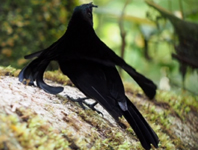Abstract
Parapachymorpha is one of eight genera within the tribe Medaurini of subfamily Clitumninae (Phasmatidae). It was established by Brunner von Wattenwyl (1893), with the type species Parapachymorpha nigra by subsequent designation of Kirby (1904), from Myanmar. Species of this genus are widely distributed in oriental tropics (Laos, China, Thailand, Myanmar, Vietnam and Cambodia), with only 11 known species in the world (Brock et al. 2018, Ho 2017). Species of the genus Parapachymorpha can be recognized by following characters (Brunner von Wattenwyl 1893;1907, Henmemann & Conle 2008, Ho 2017): 1) body robust in female and slender in male with long leg in relation to the length; 2) body surface of female granulose or spinose; 3) mesonotum of female more and less expanded posteriorly; 4) abdominal tergites lacking expanded prostero–lateral angles in both sexes; 5) laminal supraanalis undeveloped in female; 6) semi–tergite of male irregularly rectangular, with an additional finger–like ventro–apical appendix on the lower margin and reduced or absent; 7) egg capsule oval to oblong and covered with a raised net–like structure in lateral view; 8) micropylar plate oval; 9) operculum concave or convex. In the present study, we describe additional species, Parapachymorpha minuta sp. nov. from Laos, with photographs of both sexes of adults and egg.
References
Bragg, P.E. (2001) Phasmids of Borneo. Natural History Publications, Kota Kinabalu, Borneo, 772 pp.
Brock, P.D., Büscher, T. & Baker, E. (2018) Phasmida Species File Online. Version 5.0/5.0. Available from: http://phasmida.speciesfile.org/ (accessed 1 December 2018)
Brunner von Wattenwyl, K. (1893) Révision du Système des Orthoptères et description des espèces rapportées par M. Leonardo Fea de Birmanie. Annali del Museo Civico di storia naturale Giacomo Doria, Genova, Series 2, 13 (33), 1−230.
https://doi.org/10.5962/bhl.title.5121
Brunner von Wattenwyl, K. (1907) Die Insektenfamilie der Phasmiden. II. Phasmidae Anareolatae (Clitumnini, Lonchodini, Bacunculini). Wilhelm Engelmann, Leipzig, 217 pp.
Clark–Sellick, J.T. (1997) Descriptive terminology of the phasmid egg capsule with an extended key to the Phasmid genera based on egg structure. Systematic Entomology, 22, 97−122.
https://doi.org/10.1046/j.1365-3113.1997.d01-30.x
Hennemann, F.H. & Conle, O.V. (2008) Revision of Oriental Phasmatodea: the tribe Pharnaciini Günther, 1953, including the description of the world’s longest insect, and a survey of the family Phasmatidae Gray, 1835 with keys to the subfamilies and tribes (Phasmatodea: “Anareolatae”: Phasmatidae). Zootaxa, 1906 (1), 1−316.
https://doi.org/10.11646/zootaxa.1906.1.1
Ho, G.W.C. (2017) Contribution to knowledge of Chinese Phasmatodea IV: Taxonomy on Medaurini (Phasmatodea: Phamatidae: Clitumninae) of China. Zootaxa, 4365 (5), 501−546.
https://doi.org/10.11646/zootaxa.4365.5.1
Kirby, W.F. (1904) A synonymic catalogue of Orthoptera. 1. Orthoptera Euplexoptera, Cursoria et Gressoria. (Forficulidae, Hemimeridae, Blattidae, Mantidae, Phasmidae). British Museum, London, 501 pp.

